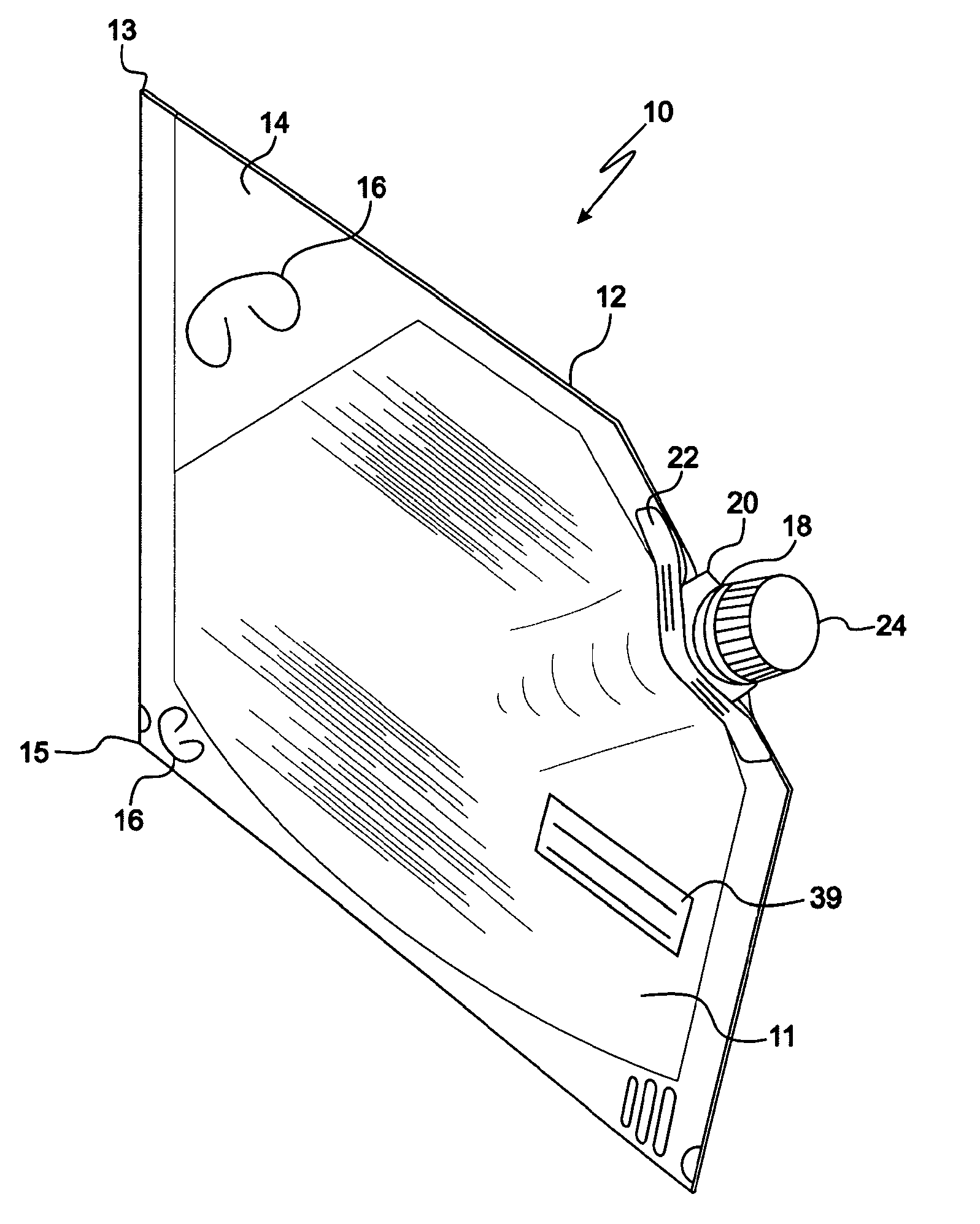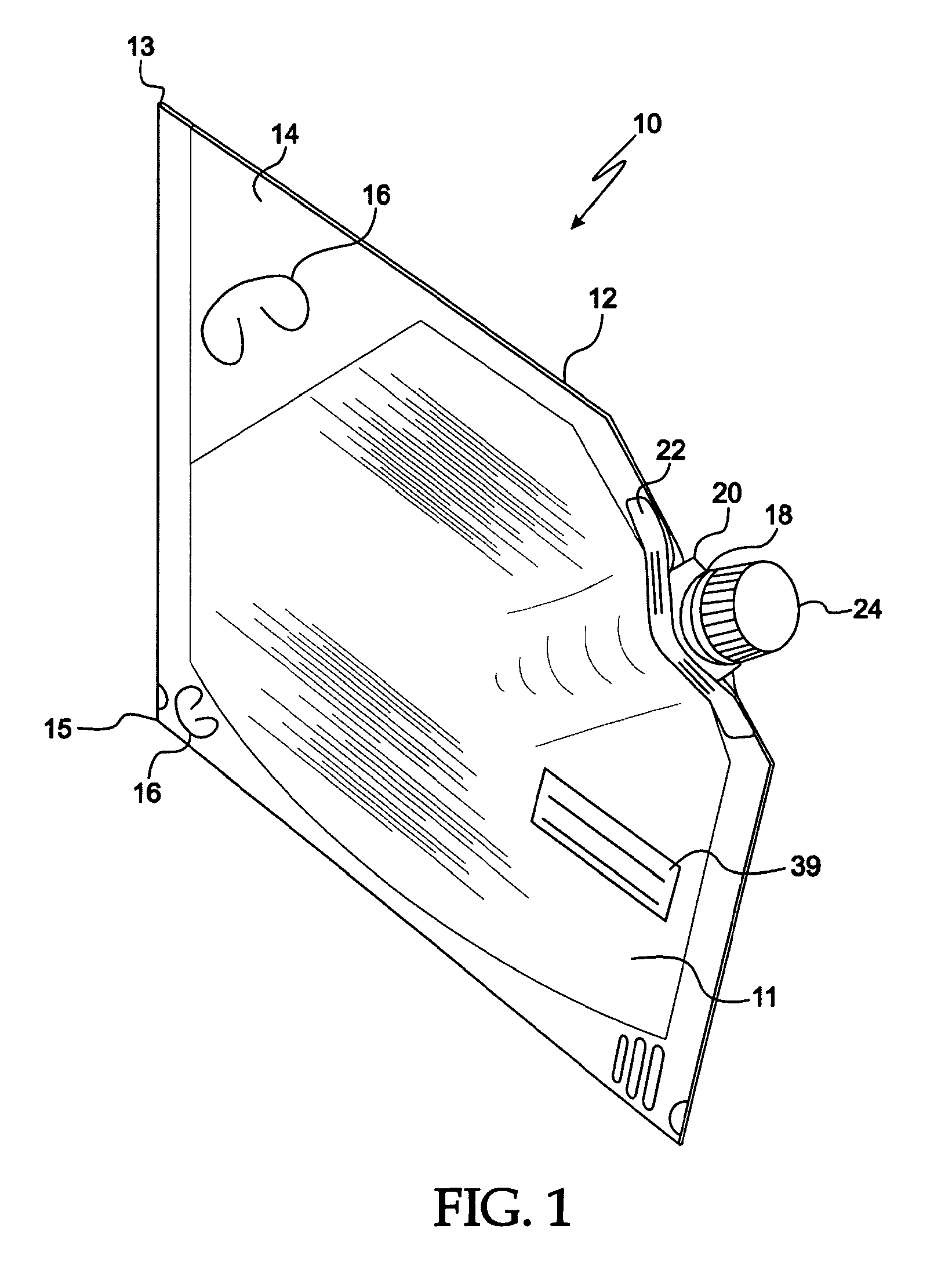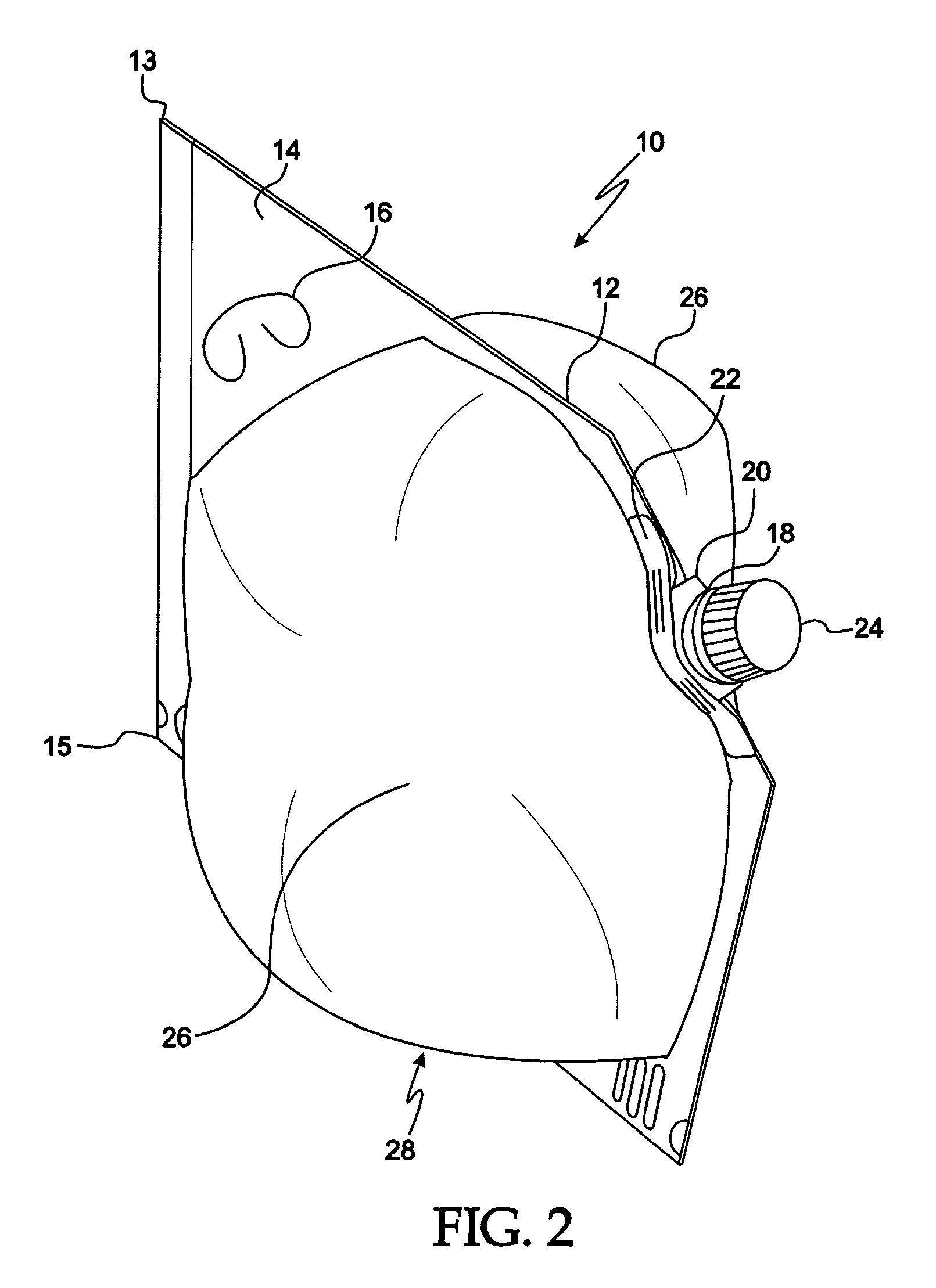Feeding method using a flexible heat treatment and storage bag
a heat treatment and storage bag technology, applied in the field of containers, can solve the problems of waste, contamination, waste of contents, etc., and achieve the effect of facilitating agitation
- Summary
- Abstract
- Description
- Claims
- Application Information
AI Technical Summary
Benefits of technology
Problems solved by technology
Method used
Image
Examples
examples
[0065]Initial tests have demonstrated that the core temperatures of fluid products contained in bags of the types disclosed above are able to reach the desired temperatures using the preferred sheet materials for forming the bags. Other sheet materials such as polyethylene bags, polypropylene jugs, glass containers and a variety of other plastic material containers were found not to permit adequate heat exchange. It is important to maintain minimum as well as maximum temperatures during these processes to protect the delicate protein molecules of dairy products while still disabling pathogenic microbes. Research with the aluminum foil-polymer laminated sheet materials disclosed above has shown that they can be used to produce bags meeting the requirements of heat treatment processes such as the pasteurization of small batches of dairy products.
PUM
 Login to View More
Login to View More Abstract
Description
Claims
Application Information
 Login to View More
Login to View More - R&D
- Intellectual Property
- Life Sciences
- Materials
- Tech Scout
- Unparalleled Data Quality
- Higher Quality Content
- 60% Fewer Hallucinations
Browse by: Latest US Patents, China's latest patents, Technical Efficacy Thesaurus, Application Domain, Technology Topic, Popular Technical Reports.
© 2025 PatSnap. All rights reserved.Legal|Privacy policy|Modern Slavery Act Transparency Statement|Sitemap|About US| Contact US: help@patsnap.com



